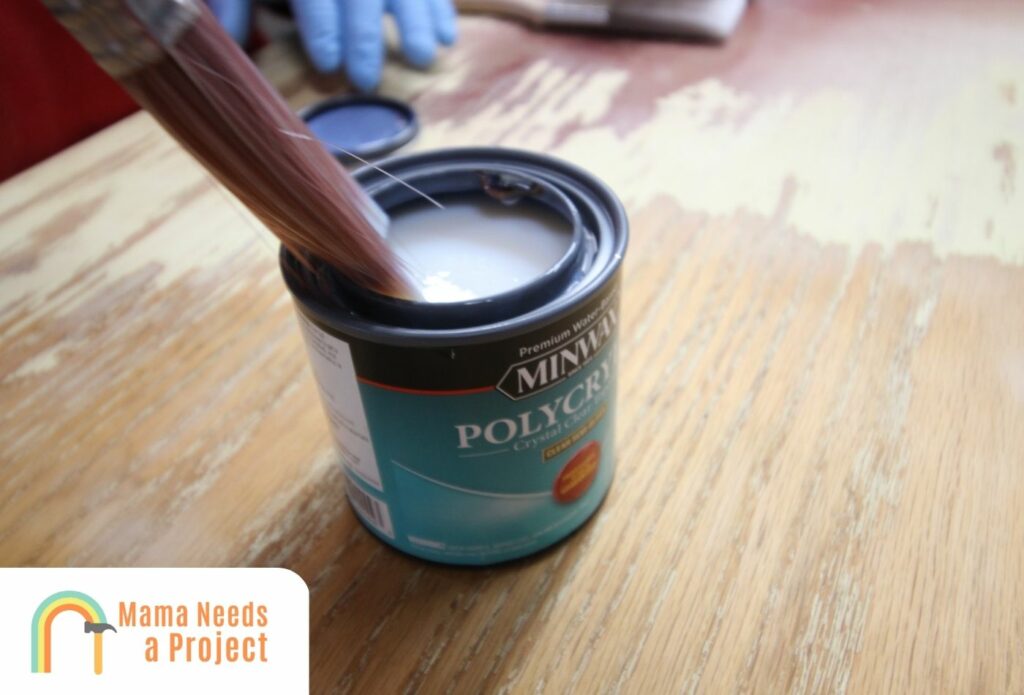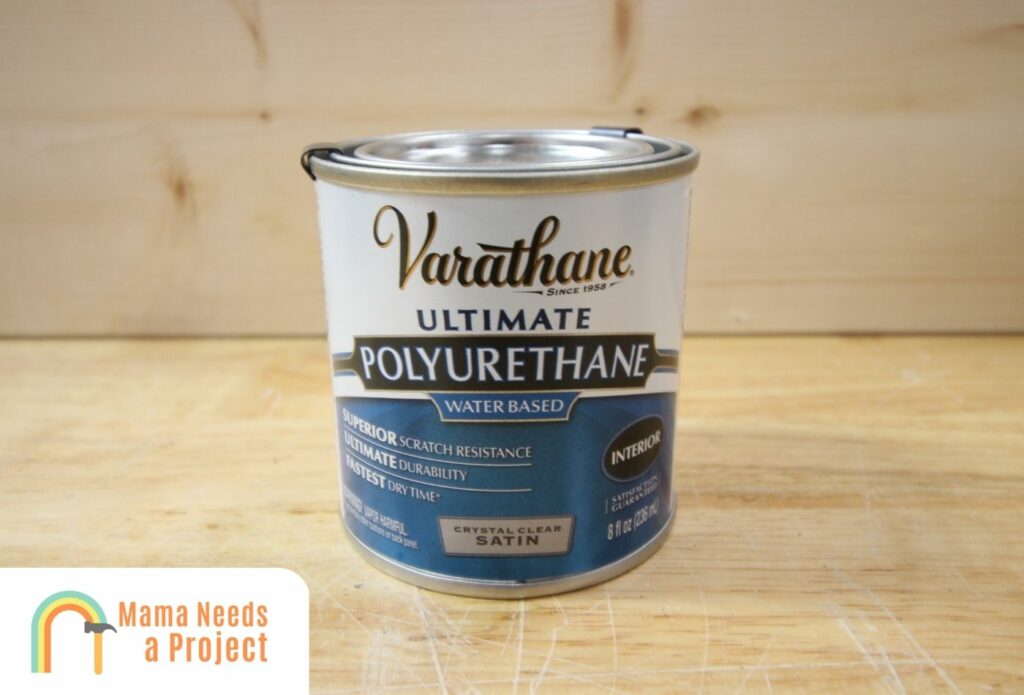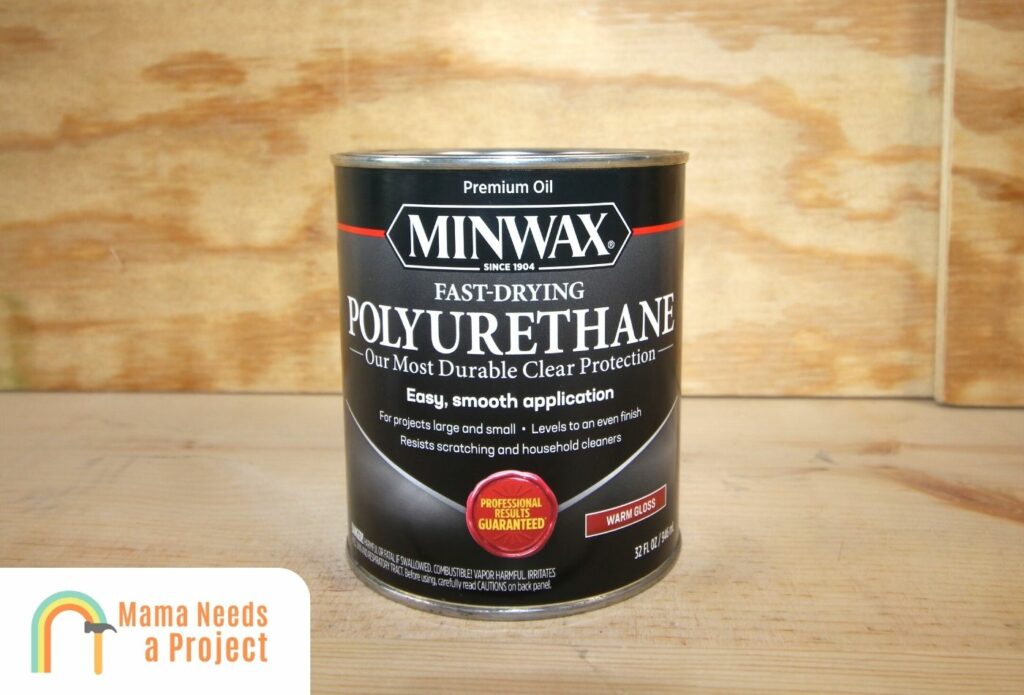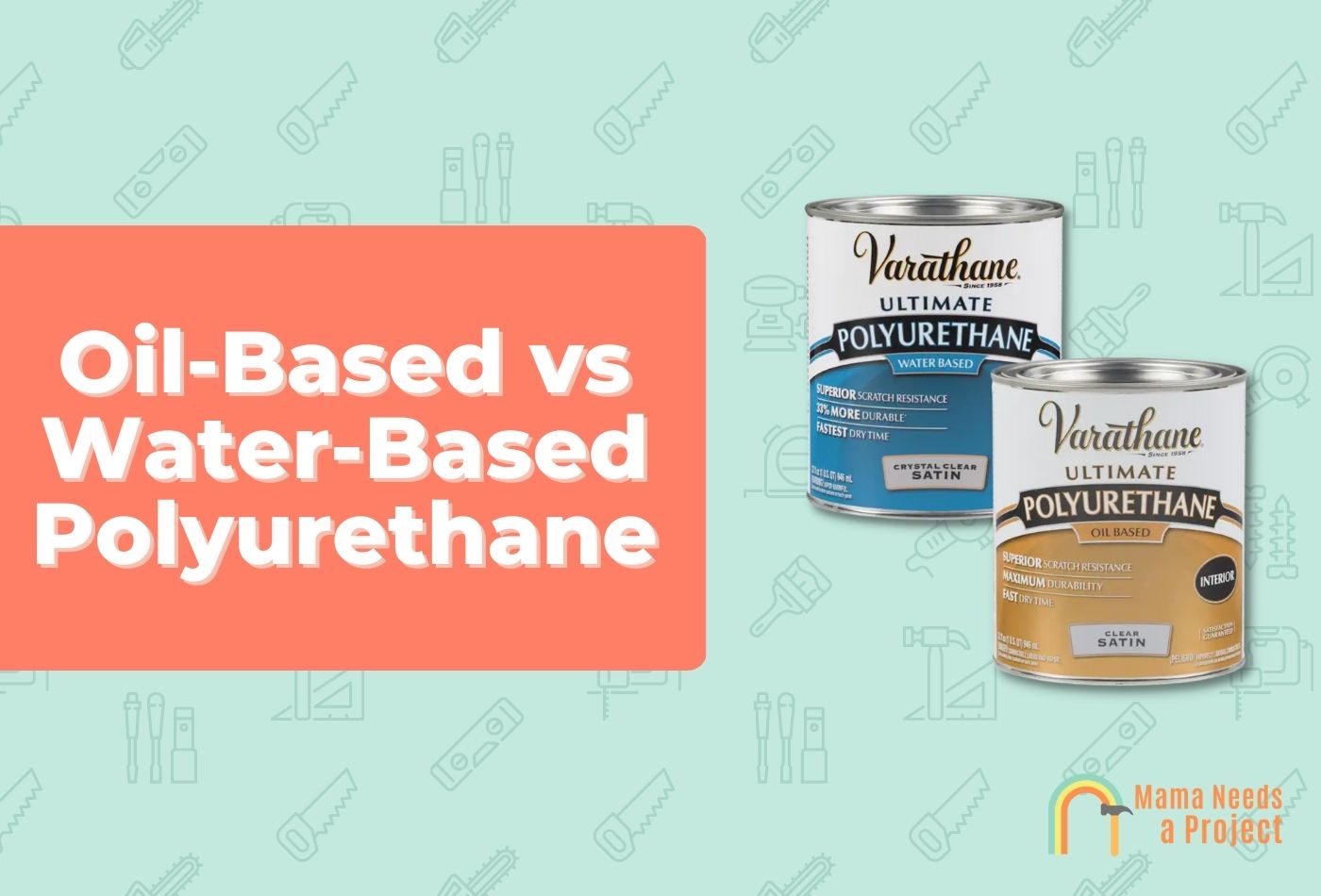Oil-Based vs Water-Based Polyurethane: Which is Better?
Polyurethane finishes are a great way to protect your wood and keep it lasting for years.
There are two main types of polyurethane – oil based polyurethane and water based polyurethane.
But what’s the difference and when should you use each?
In this post, I’ll compare oil based vs water based polyurethane so you know which to use on your project. Let’s dig in!
Oil-based polyurethane is best for exterior applications, as it’s durable, weather-resistant, UV-resistant, and heat-resistant. Water-based poly, on the other hand, is better for indoor applications, as it dries fast, clear, and doesn’t emit significant VOCs when curing.
Oil-Based vs Water-Based Polyurethane

Before I start dissecting oil-based poly and water-based poly, it’s important to point out that these polys are more similar than they are different.
They’re both used as protective coatings for wood, wood-based materials, metals, and other surfaces.
It’s just that the composition of one makes it ideal for certain applications while the other’s composition makes it ideal for different applications.
In most scenarios that require a polyurethane finish, you can use either poly to great effect.
Now that we’ve got the obvious similarities out of the way, let’s look at how these polyurethanes differ.
Main Differences Between Water Based and Oil Based Polyurethane
The main difference between oil-based and water-based polyurethane is the former uses oil-based solvents while the latter uses water as a solvent.
Of course, both finishes can be compared in a variety of ways, but they’re often compared in terms of durability, appearance, toxicity, curing time, ease of application, seal, and cost.
Durability

When it comes to durability, oil-based polys are generally more durable than water-based polys. I say “generally” because some high-quality water-based polyurethanes are just as strong as some well-respected oil-based products.
The main reason why oil-based polyurethane forms a more durable finish once fully cured is because it’s more viscous when applied to a surface. Think about it: if something is thick when in semi-liquid form, it’s likely to stay thick when it reaches solid form.
Durability is also in large part determined by how many coats of polyurethane are applied. So several coats of water-based polyurethane (5-7) may collectively match the durability of a few coats of oil-based polyurethane.
Additionally, oil-based polyurethane is generally more weather-resistant than water-based poly, which is why oil polyurethane remains the go-to poly for outdoor applications.
That said, it’s not like you can’t find water-based polyurethanes that are strong enough for the outdoors—you can! It’s just that oil-based polys have long been used for these applications, so they’re more widely available than niche, high-quality water-based polys.
Color & Appearance

You can tell a surface has received an oil-based finish if it has a yellowish or amber tint. Oil-based finishes are also quite glossy, but not always.
Water-based finishes, on the other hand, don’t have any tint once fully cured because they lack the components that give oil poly its color, i.e. the oil-based solvents.
In many cases, the tint oil-based poly has once completely cured isn’t a big deal because it blends well with the natural color of the surface underneath; this is usually the case when oil-based poly is applied to a hardwood floor.
But if you have a softwood that needs finishing, you may want to steer clear of the oil-based poly and go with a water-based version instead, as the tints oil-based polys can have generally don’t go well with the colors often displayed by softwood surfaces.
And despite being thin, if you apply enough layers of glossy water-based poly to a surface, a shiny finish will be the result.
Check out this satin vs gloss polyurethane comparison for more info about each finish!
Toxicity

Oil-based polyurethane is much more toxic than water-based poly, as it contains a larger amount of volatile organic compounds (VOC).
Plus, when oil-based poly is curing, it emits these harmful compounds in gas form, which is why you’ll smell strong fumes immediately after applying it.
For this reason, it’s best to wear proper safety gear when applying oily polyurethane, and you should only do this in a well-ventilated area.
Overexposure to polyurethane’s noxious fumes can lead to a range of short-term health problems, like headaches, nausea, irritation, and dizziness. You could even pass out if you’re exposed to these toxic fumes for too long.
Drying/Curing Time
Oil-based polyurethane takes longer to dry and cure than a water-based finish.
Usually, it takes one coat of oil-based polyurethane five to seven hours to become semi-dry, whereas one coat of water-based polyurethane will become semi-dry in under an hour.
Furthermore, it takes oil-based poly 30 days to cure completely, while water-based poly can cure in under two weeks.
The reason why the oil-based poly curing process takes longer is because this poly is much more viscous; water-based poly, on the other hand, is mostly water, so it doesn’t take all that long to dry.
Seal

When applied properly, both oil-based and water-based polyurethane are terrific sealers, but oil-based is slightly better just because it’s thicker.
That said, if you apply oily poly wrong, its sealing capability will be subpar, meaning you’ll have to remove it and try again, which can be a real pain.
Water-based polyurethane is easy to get in joints and crevices, but you need a lot of it to create an effective seal.
In the end, how well a poly does as a sealer largely depends on how it’s applied.
Ease of Application
When it comes to ease of application, oil-based polyurethane and water-based poly are about the same.
The challenge you may run into when applying oil-based polly is it’s harder to spread out because it’s viscous.
On the other hand, with a water-based finish, you may find the poly you apply first dries before you finish coating the whole surface, which can make tracking your progress difficult.
Both polys can be brushed, rolled, or sprayed on. Be sure to check out my list of the best polyurethane brushes for the best application.
But when it comes to spraying, I recommend using water-based over oil-based, as it’s thinner and therefore easier to spray.
But if you thin oil-based poly with mineral spirits (paint thinner) or another solvent, it becomes a lot easier to spray.
Cost
I can’t say conclusively that one kind of polyurethane is more expensive than the other. Some high-quality water-based polyurethanes are more expensive than mid-tier oil-based polyurethanes because they dry fast, look good when completely cured, and hold up well against a range of eroding elements.
On the other hand, an oil based poly that’s engineered to be especially tough is going to be more expensive than water-based polys which lack the same strength.
In the end, both polys are mass-produced and therefore widely available, so the general difference in price isn’t all that significant; in most cases we’re talking about a $10-$15 difference.
When to Use Oil-Based Polyurethane
If you want to prevent surface scratching and improve a material’s water resistance, coat it with oily polyurethane varnish.
Since oil-based polyurethane is much more durable, it’s often applied to surfaces that are at a higher risk of getting dinged and damaged, like hardwood floors, stairs, tabletops, doors, cabinets, and window frames.
And if you don’t want to use a ton of poly, use oil-based; it’s a thicker poly so you won’t need many coats to achieve a durable finish and an effective seal.
Check out the video below for more info on the right polyurethane for your project!
When to Use Water-Based Polyurethane
Use water-based poly when you want a quick-drying finish with decent sheen and no additional color; the yellowish tone that oil-based polyurethanes display once completely cured won’t show up when your water-based polyurethane is done curing.
Water-based polyurethane can be applied to a range of surfaces both indoors and outdoors, but if you suspect that a surface is going to be at risk of getting damaged, it’s best to go with oil-based poly.
That said, you could use a quality water-based poly and discover that it’s more durable than most of the oil-based polyurethanes that are on the market right now.
Water-Based vs Oil-Based Polyurethane for Furniture
Both water-based and oil-based polyurethanes can be used on furniture, but water-based polyurethane is better for indoor furniture while oil-based poly is better for exterior furniture.
A lot of indoor furniture is made from softwoods, and combining oil-based polyurethane with these light species doesn’t usually end well; the final surface color is unappealing.
But if you coat your darker deck chairs in oil-based polyurethane, they’ll be able to withstand the elements and look good all the while.
Water-Based vs Oil-Based Polyurethane for Floors
Because oil-based polyurethane is stronger and more wear-resistant than water-based poly, it’s best to use oil-based on floors, especially a stained hardwood floor.
And floors that are subjected to a lot of foot traffic will benefit from having more coats of poly than less, no matter which kind you’re using.
But if you don’t know which kind of poly is right for your floor, just ask a local floor contractor; they’ll make sure you use the right poly.
Note: Before you apply oil-based poly to a floor, know you’ll have to stay away from home for at least a few days while this cures, as the strong odor it emits can be harmful.
FAQs
Which is better water-based or oil-based polyurethane?
In some cases, oil-based polyurethane is better than water-based polyurethane, and in other cases the opposite is true. Generally speaking, however, oil-based poly is more durable, so it has more applications.
Should I use water-based or oil-based polyurethane on wood floors?
If you want to prevent wear marks, use oil-based polyurethane on your hardwood floor. But if you want a clear coat that has a decent shine, go with water-based. In truth, both polys work well on floors.
Final Thoughts
In the end, you can’t go wrong with either oil-based or water-based polyurethane; it’s just that sometimes one is better than the other.
So if you want to protect a wood surface and ensure it has a durable seal, choose oil-based poly. If you want a thinner, clearer poly that’s more eco-friendly and quick-drying, go with a water-based option.

